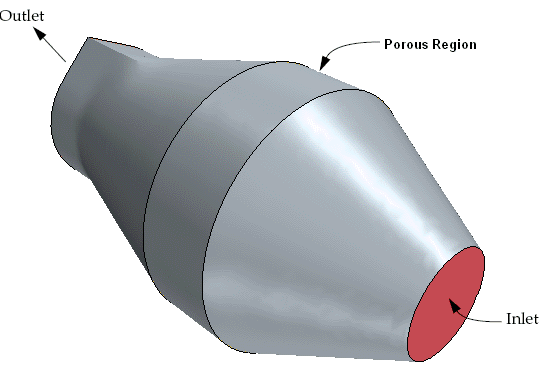Porous Resistance: Isotropic Media
This tutorial models flow through a catalyst geometry.
The geometry is shown below. The catalyst material at the center of this geometry is modeled as a cylindrical porous region of length 0.03 m and diameter 0.1 m.


In the porous region, the theoretical pressure drop per unit length can be determined using the equation:
Where is the superficial velocity through the medium and are coefficients defining the porous resistance, known as the inertial resistance and viscous resistance, respectively.
Values for the resistance coefficients can be measured experimentally or derived using various empirical relationships, depending on the exact nature of the problem. In this case, = 25 kg/m4 and = 1500 kg/m3s. These values are roughly what you would expect from an isotropic porous catalyst.